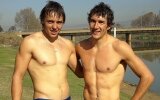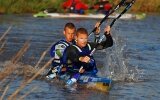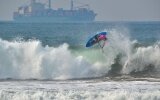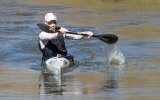- Magazine
- #readityourway
- Weekly Stories
- #shareyourstory
-
Adventure
- Abroad Travelling
- Africa Travelling
- Events
- Expos & Shows
- Festivals
- Fishing
- Free Diving
- Gliding
- Horse Riding
- Inspiring People
- Islands Travelling
- Kite/Windsurfing
- Motorbiking
- Motorised Water Sports
- Mountaineering
- Mountain Biking
- Off-road 4x4
- Off-road Motorbiking
- Paddling
- Performance Driving
- Photography
- Rock Climbing
- Rollerblading
- Sailing
- Scuba Diving
- Skateboarding
- Skydiving
- Snowboarding & Skiing
- Surfing
- Swimming
- Trail Running
- Wakeboarding
- Waveski Surfing
-
Sport
- Adventure Racing
- Fishing
- Free Diving
- Gliding
- Health & Fitness
- Horse Riding
- Inspiring People
- Kite/Windsurfing
- MMA
- Motorbiking
- Mountain Biking
- Multi-sport
- Off-road 4x4
- Off-road Motorbiking
- Paddling
- Performance Driving
- Photography
- Road Cycling
- Road Running
- Rock Climbing
- Rollerblading
- Sailing
- Scuba Diving
- Skateboarding
- Skydiving
- Snowboarding & Skiing
- Surfing
- Swimming
- Rugby
- Trail Running
- Triathlon
- Wakeboarding
- Waveski Surfing
- Lifestyle
- Calendar
Blunting and Boofing Basics
Words: Deon Breytenbach | Photos: Robin Kock & Terry Dold | Blog: www.doitnow.co.za/blogs/deon-breytenbach
Topic:
Paddling
Hopefully you've been practising your spins, which probably means you have been falling over a bit, and your roll should be coming along nicely. Remember, if you still have some kinks to work out then check out my blog for more information and videos. In this issue, I will look at a really fun wave move called the blunt, and the boof stroke, which will not only help you to steer clear of sticky pour-overs, it'll also keep your hair dry :)
The Blunt
The blunt is one of my favourite freestyle moves and a fantastic stepping stone to some of the bigger and cooler wave moves. It can be done in both directions, but I will break down the right-hand blunt. To blunt, you need a wave, even a small one will do, speed, commitment, timing and snappy edge control. And with the modern play boats being so small and bouncy, blunting has become much easier and you don't need a Nile Special size wave to get the hang of things. The blunt can be broken down into three stages; set-up, release and recovery.
Set-up: For your initial set-up and to get some speed, start as high up on the wave as possible so that you have a bit of space to carve down to the corner of the wave - don’t sit on the corner. The bigger the wave, the more space you will have to move around on and the easier it becomes. Now once you are sitting on the top of the wave, lean forward a little to accelerate down the face with your left edge engaged so that you can carve down towards the wave's shoulder.
Release: For the next step you'll have to do a few things simultaneously because you are about to reach the shoulder. First, you must push your legs down into the water, to weight the left edge of your kayak, and at the same time take a hard forward stroke, on the left, to get a little extra boost. As you finish the stroke, you'll feel the kayak being rejected by the water and your bow will start to push up. This is the start of the release phase and where big blunts are made or lost, so timing is crucial and will take some practise to get it right. As your bow reaches the highest point of being pushed back up, bring your paddle around and get your right-hand blade onto the face of the wave, while keeping your left edge engaged. As your blade enters the water, do a hard reverse / block / back stroke and really snap your kayak over onto its right edge (think left knee up and right knee down, kick it). The transition between the edges combined with the rotation created by the push of your back stroke, on your right hand, will release the kayak so that you are now vertical and just the bow is in contact with the face of the wave. If the wave is a decent size, you will be completely out of the water and flying, with the hull of your kayak now facing up stream. As your kayak starts to drop back down, you need to get the recovery phase going otherwise you might flush off the wave.
Recovery: For the recovery, flatten your hull so that the kayak lands as flat and smoothly as possible in the back surf. At the same time, return your left-hand blade to the water and do a big reverse stroke, thus pushing you upstream while remaining on the wave. Congrats, you've just blunted!
Just remember that the more aggressively you edge your kayak, the more release you will get. If you feel that your blunts are flat and not vertical, then focus on really edging your kayak. And if you keep carving off the wave once you've landed, then you need to get your hull flatter and push harder on your back stroke as you land. The blunt is a very dynamic move and a great stepping stone to get you comfy with aggressive edge transitions that are crucial to moving on to the bigger wave tricks.
Boof stroke
Now let's look at infamous boof stroke. The idea behind a boof stroke is to raise the bow of your kayak and fly over any obstacle, such as a shallow landing spot from a drop or a retentive pour-over that you don’t want to go surfing in. I will also break down the right-hand boof into three steps: the set-up, launch and recovery. But before I get to that, let’s get the two main misconceptions out of the way; a good boof isn’t just about down river speed, and leaning back doesn't make your bow come up! You can boof over a wave to avoid a hole or off the lip of a drop, and the actions for both are the same. It's also good to practise boofing over smaller, friendlier river features so you know what to do before having to boof to stay alive.
Set-up: The boof starts about three strokes upstream of the feature you are going to boof from. The set-up is important, so when approaching the spot you are going to boof from, get some downstream momentum going by taking two or three good forward strokes. Make sure that the last forward stroke you take lines up your kayak in the direction you want to go. Now comes the scary part (the bigger the feature, the scarier it will be)! As you approach the feature, get your right-hand blade ready at your toes, with your paddle as vertical as possible, and wait.
Launch phase: As you start to go over the lip of the drop or wave place you right blade over it, at your toes, engage the right edge of your kayak and identify your landing zone. Now with your blade over the drop, do a full powered forward stroke to launch yourself into the air. It's at this point where most boofs fail, so you really need to focus now. With your stroke just in front of your hips and engaged in the water, lift your legs by doing a small sit up. Yes, I know you are thinking that you should lean back to stabilise the weight of your bow, but this is wrong! If you throw your body backwards, you are in essence forcing your legs down and this will cause the bow to drop. By doing the sit-up, you are lifting your legs and this will keep your bow high and dry. Next, pull your forward stroke through and past your hips, and tighten your stomach muscles to keep your legs and bow up. If you get everything right here, you will fly.
Recovery: As you come down to land, your body should still be in a slightly forward position. Stay in that position and tense up every muscle in your body, especially if you are boofing off high drops because there is going to be a bit of impact when you land. As you complete your launch stroke, bring your paddle into a neutral, low brace position and away from your face. Avoid placing your paddle in a high brace position because if you land a bit funny, it is super easy to hurt your shoulders. Now with your body still in the sit-up position and your low brace going as soon as you hit the landing zone, take a good forward stroke to keep your downstream momentum going. If you have set-up properly, launched aggressively and landed with a nice big 'boof' sound, you'll be sitting pretty with your hair dry and smiles all round.
Always keep in mind that you should only boof drops higher than four metres, and your body position should be slightly forward with every muscle in your body tensed before you land at the bottom! The reason being that if you land flat on water (from a high drop) that is not aerated, the impact will be rather severe and you could break or damage your back.
The boof stroke has saved me on many occasions over the years and is really something you should practise as often as possible. The more comfortable you are with your kayak, stroke power and bracing, the easier (and more enjoyable) river running will become. And the only way to fine tune and perfect your boof is to practise, practise, practise. If you are unsure of anything, check out my blog for pictures and descriptions that cover everything mentioned above.
I hope to see you all at the Blyde Xfest 2013 Resurrection from 28 February to 3March, at the Blyde River.
Issue:
Issue 22 Feb'13
Contributor:
Deon Breytenbach
Related content
|
Aussie Morfitt Organising Hansa Fish Challenge
|
|
|
|
|
|
|
|
|








